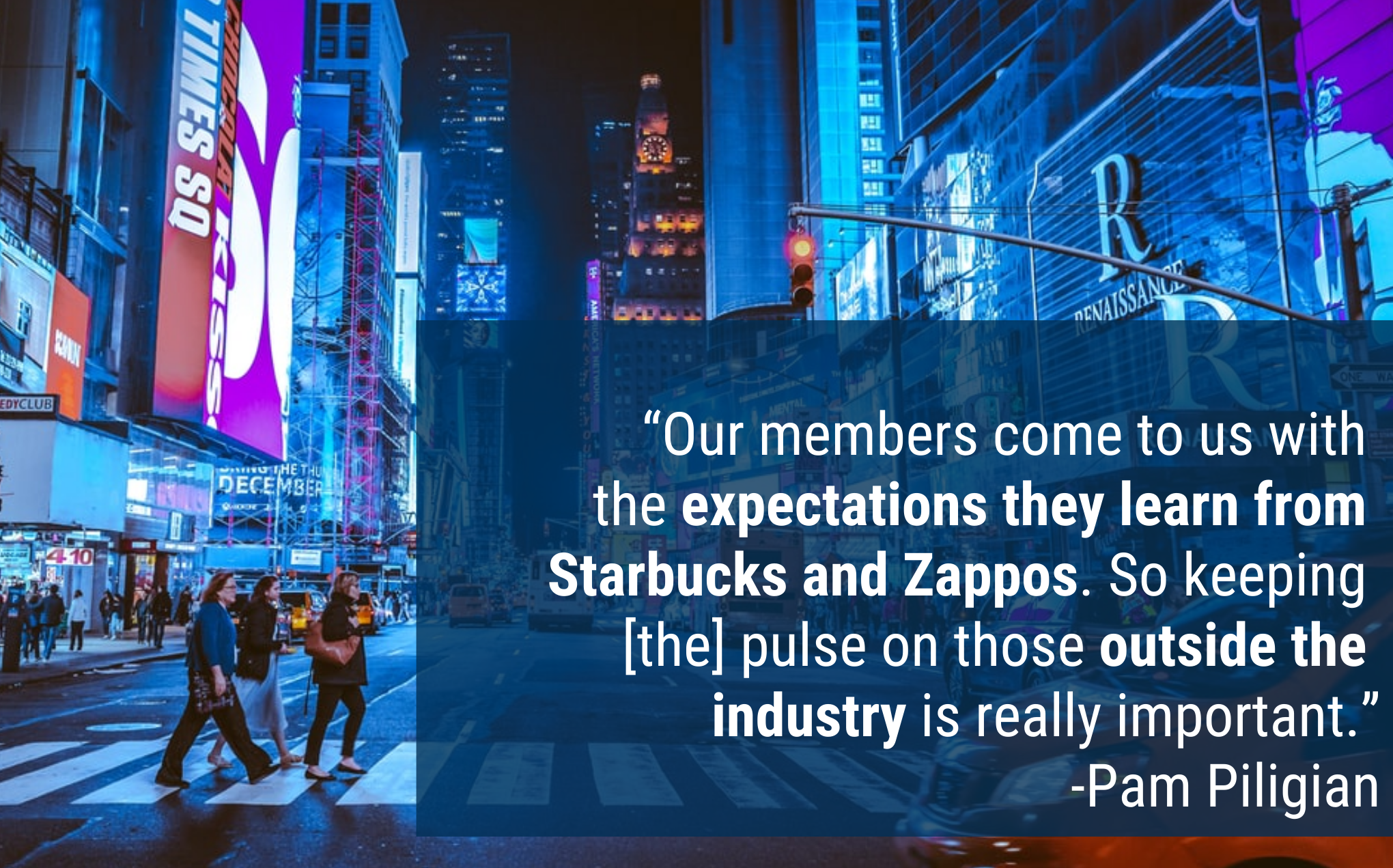5 CRM Key Takeaways from Key West
By Paul Timm, Vice President of Marketing, NAFCU Services
At the recent CEOs and Senior Executives Conference, I had the good fortune to speak with two of the brightest minds in customer relationship management (CRM):

You have to think fast to keep up with Deidre and Pam, but they brought real-world examples of several different challenges and victories. They made this panel super informative and insightful.
Here are my 5 Top Takeaways:
1. Look up and beyond
Don’t get too caught up comparing your own CRM efforts to fellow credit unions or even other FIs. Your members aren’t comparing you to your peers. Although benchmarking can be valuable, it’s better in the long run to recognize that members are less interested in how they might be treated at a different bank or credit union than they are in all of their service experiences over the course of a day. “Our members come to us with the expectations they learn from Starbucks and Zappos,” Pam said. “So keeping [the] pulse on those outside the industry is really important.”
2. If it was easy, it wouldn’t have an acronym
CRM programs take a lot of planning, testing, and revising in order to get right. Members expect to be treated as individuals, by someone they trust. Credit unions have a leg up here, but member needs and preferences change due to factors entirely out of a credit union’s control. And those needs change over time, because a Gen Z, first-time car buyer has different priorities and financial obligations than a Gen X head of household. Getting all this right, all the time, and systematically, can be complex. If that doesn’t sound comforting, remember that we’re all in the same boat. “When it’s done right, it’s not easy,” Pam said.
3. Don’t be a copycat
 Deidre pointed out that a well-executed CRM program may lead you away from acting just like a peer. Like many institutions looking to boost profile with affluent members, they considered adding a travel incentive card. But a careful look at transaction numbers showed that the membership segment cared far more about everyday purchases.
Deidre pointed out that a well-executed CRM program may lead you away from acting just like a peer. Like many institutions looking to boost profile with affluent members, they considered adding a travel incentive card. But a careful look at transaction numbers showed that the membership segment cared far more about everyday purchases.
So MSUFCU rolled out a card with accelerated earnings on everyday purchases, focused on members with specific borrowing habits and histories. Because they reviewed their own data rather than following the trends, this launch hit its one-year issuance goal in just six months. “Without that data, we assumed that it was going to be travel,” she said. “It was a good use of our transaction data to help develop our products.”
4. Anticipating member needs is powerful and empowering
CRM can be used to have more active conversations with members, including surveys and other opt-in data collection. But you can also score major wins for loyalty and convenience by reaching informed conclusions from what you already know. Pam shared how her team anticipated the anxiety (and high contact volumes) around the second wave of stimulus payments by telling members who received the first round that they would receive an automatic notification when the second payment hit. Media hype on the second payment wave was high, and Pam’s team reasoned that almost everyone eligible for the first check would remain eligible for the second. “We knew there was a better way than them having to check the app all the time just to see is the money there? Is the money there?!” she said.
This proactive notification showed members that their credit union understood—without having to ask. And as a bonus, the call center appreciated the drop in inquiries as well.
5. Business success must drive CRM
It’s easy to get caught up in CRM success stories with metrics like loyalty and engagement. Those are important, but they’re just vanity stats until they have a business impact. When we discussed what makes Starbucks a CRM standout, Deidre pointed out that the coffee giant’s program is laser-focused on driving purchases. It works because Starbucks understands what moves their customers. Pam remarked how loyalty influences buyer behavior even when it bucks conventional wisdom. Few retailers can get away with asking customers to keep funds on account for future purchases. But Starbucks customers willingly hand over billions of dollars to be held in trust -- because Starbucks knows them and thoughtfully rewards them. Some might call it Customer Relationship Management!
You can catch more riveting conversations with the industry’s best and brightest at all the NAFCU conferences. And join me soon for the second part of my CRM key takeaways from Key West!
